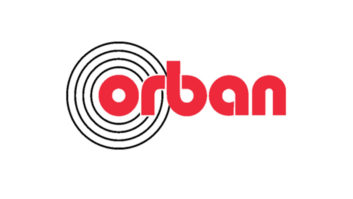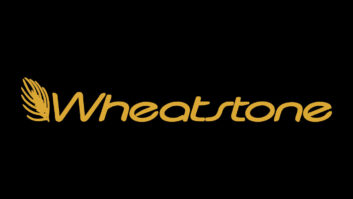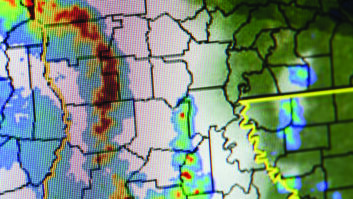A while back I took my wife to a funky little dance club in Geneva, Switzerland, with which I had become familiar over several previous solo visits there.
This night, however, I was surprised to see an uncharacteristically large crowd hanging in the street outside and a big line at the door. I learned that there was to be a special show starting shortly, featuring several of what the folks at the door called “DJ groups.” Intrigued by the unusual terminology, we got in line and soon went inside, hoping to find out whether this was just another anomaly in French-to-English translation, or something truly new.
We were amazed to find out it was indeed the latter. We wandered out of the club a few hours later feeling that we had seen the future of music, or at least one of its possibilities.
Keyboard wizard
The multiple acts on the bill that night were all variations on a theme, but the top bill was exemplary of the genre: Three 20-something guys on stage, dressed and lit like a band, each standing behind his own “axe” — on the left, a laptop PC; on the right, a Powerbook Mac; in the middle, a couple of Technics turntables with an analog DJ mixer.
As the three performers began to play their respective devices, it was usually difficult to tell who was actually contributing what to the overall sound, but they were clearly working hard and together, just like a band, producing a coherent, well-rehearsed and rich sonic piece suitable for either dancing or just listening. Most of us just stood there watching, but occasionally a few pockets of folks would start dancing to the amazing music. Occasionally, the “band” would break it down, and two of them would step back from their rigs, while the third soloed. This allowed the audience to determine just what an individual member of the group was doing. Of course, the analog DJ (who looked to be the youngest of the three) was the most fun to watch during the solos, and appropriately, his was usually the last of the breaks.
Although all of the music had originated from recorded elements, the presentation of the resulting mix was collaborative and live. To me this was a true hybrid of DJ and band, and was no less valid as a musical performance than if the guys on stage had been using guitars and drums. And while I didn’t recognize any of the musical elements (all instrumental), I later learned that this was because much of it was original — mostly created by the DJs themselves — making the hybrid lean even further toward the “real” music model.
In any case, I had never seen anything like it, and I was impressed. Maybe transfixed is a better word. It took me back to similar discoveries of my youth, like the first time I saw a real live light show (created by three guys slaving over a variety of hot projectors, resulting in a stunning, psychedelic visual tableaux), or the first time I heard a professional big band play live (standing right in front of the horn section the whole night, looking like the guy in the Maxell ad with his hair blowing back). That night in Geneva ranked as another of those Eureka moments.
From recreation to re-creation
Since then I’ve learned more about the new DJ subculture. While most of it is can be characterized as somewhat more “canned” than our Geneva experience, it’s all part of a continuum that’s been developing in pop music for a number of years.
At one end of this spectrum is the band with a DJ as one of its members, as pioneered by hip-hop DJs like Grandmaster Flash. It’s become a staple of the hip-hop scene, with every group having a DJ member, just like every Latin band has at least one percussionist. At the other extreme is the band made up of only DJs, as described above. Somewhere in the middle are the bulk of today’s club jocks, who scratch, cut and mix music in a far more creative fashion than the traditional radio DJ.
But while the radio DJ simply plays one song after another, his or her real value-add is the banter in between, which is typically not a part of the club DJs’ oeuvre. Thus the two types of DJ-ing have diverged to the point where today they are worlds apart.
Another tributary of this scene is the “turntablist producer,” who produces recordings that are remixes made in a studio, largely (if not entirely) from material taken from previously released recordings by other musicians. In some cases these recordings are released as records in their own right, such as those from well-known DJ/producer Paul Oakenfold. In many other cases, these recordings are simply used by the DJ at his/her own shows. For the latter, these recordings originally had to be pressed to vinyl — the so-called “dubplate” — but today they can simply be loaded onto a computer-based DJ program (such as the Serato system discussed in our Nov. 22 column).
This has led to a full range of “remixes” of popular tunes, which is sort of analogous to a band covering another band’s tune, but in the DJ version, the actual recording of the original song is used. Some popular songs have had several different remixes released, such as Coldplay’s “Clocks.” Customers of online music stores frequently find results of their searches for popular tunes to be populated by both the original and numerous third-party remix versions. (Note to engineers: This argues for a new top-level metadata field for “Remixed by,” following just after Title and Artist.)
A variant of this is the “mash-up,” which typically remixes parts of two or more songs together, such as the current “Sure Side of Fame” by L.A.-based group The Arbiters that cleverly combines Lou Reed’s “Walk on the Wild Side” with David Bowie’s “Fame.”
An indication of the popularity of this production space is the number of TDM and VST “DJ plug-ins” for ProTools and other computer-based audio production systems, which allow DJ-style manipulations of audio tracks. (In fact, the Serato system originated as just such a plug-in, before becoming a standalone application for club use.)
Interestingly, while such appropriation of previously published music has created a rich and interesting new genre, it has given fits to the business side of the music industry. There is no established music licensing mechanism that covers this process, which applies to everything from sampling of a small portion of a song to remixing an entire song. Today, to be strictly legal, each remixer must contact (and often pay) the rights holders of the original piece to obtain permission. Several efforts are underway to simplify this process into something that might work like the statutory licensing processes that are in effect for composer, mechanical and public performance rights that cover bands, filmmakers, broadcasters and others use when they want to include a particular piece of music into their product or service.
One way around this has been to use public-domain material, which has perhaps stimulated the development of another variant of remixed music, in which pieces of (typically spoken-word) content are taken from old corporate training film soundtracks, NASA or other government transmissions, university lecture recordings and the like. The juxtaposition of these often dated or strange-sounding recordings with contemporary music backgrounds creates another intriguing modern sonic flavor.
Putting it back on air
The high-brow perspective might compare this new genre to Montage or Found-art forms in the visual arts, and the comparison would be apt. From humble beginnings, this area has now become quite sophisticated, both artistically and technically. In the latter area a number of books have emerged recently, such as “The Dance Music Manual” by Rick Snoman (a runaway hit that surprised even its publisher, Focal Press, which now plans to publish more titles addressing this area in the near future).
The next challenge for club DJs will come from the user-generated content space. These new venues for publication of remixes, mashups and the like from amateur stylists will drive professional DJs to push the envelope further to stay ahead of the crowd. It also offers working club DJs a method of spreading their fame beyond the somewhat exclusionary walls of dance clubs to reach a broader audience. (Many DJs and turntablist producers already have established MySpace pages, for example.)
Closer to home, can radio re-adapt this increasingly popular offshoot into its own future offerings? It seems only fitting for the medium that spawned this DJ subculture to welcome it back into the fold in some way. A few forward-thinking stations have begun to do so, mostly by including some remix and mashup products in their playlists, but occasionally by airing live DJ sets on air, in which club DJs perform in the station’s studio like a live band.
While radio and club DJs will continue to occupy two separate worlds, expanding their area of intersection could be mutually beneficial.












